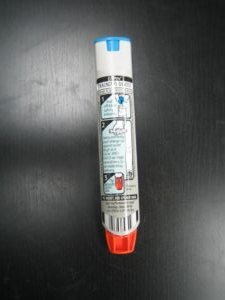Yellow dye is known to trigger mild to severe allergic reactions among those who have sensitivity to one or more chemical components in a particular product. Various food manufacturers utilize this synthetic dye in several products and it is vital to carefully read the labeling to check which processed foods contain the additive. Once yellow dye allergy is suspected, it is vital that the individual is well aware of the symptoms and common sources to prevent any complications.
Symptoms of yellow dye allergy
The usual allergic reactions to food such as yellow dye include the following:
- Skin itchiness
- Hives
- Stomach pain
- Nausea
In case of a severe allergic reaction, the doctor will prescribe epinephrine that must be on hand at all times. This is an injectable medication that works by reducing the swelling and other severe symptoms. - Vomiting
- Diarrhea
As for severe reactions, it can result to swollen lips and tongue and even difficulty breathing or swallowing as well as chest pain. Once the individual experiences these symptoms, a doctor should be consulted right away.
When it comes to chest discomfort and difficulty breathing, the individual must seek immediate medical care. In case of a severe allergic reaction, the doctor will prescribe epinephrine that must be on hand at all times. This is an injectable medication that works by reducing the swelling and other severe symptoms but once a shot is administered, the individual should still be taken to a healthcare facility for further assessment of the symptoms.
What are the asthma-induced reactions?
Based on early studies on tartrazine, it linked yellow dye to the development of asthmatic episodes. The results of the latest studies however, could not confirm these early findings.
If the individual experiences episodes of asthma attacks that occur after ingestion of yellow dye proteins, a doctor should be consulted to determine the suitable treatment.
Other possible health issues
It is important to note that yellow food dye might be associated with other conditions that can disrupt with learning or other cognitive functions among children. A potential concern is often linked to increased hyperactivity, irritability, aggression and sleep difficulties.
Once a child experiences one or several of these conditions, the doctor might recommend the elimination of foods that might contain yellow dye to check if the behavior or condition is moderated.

